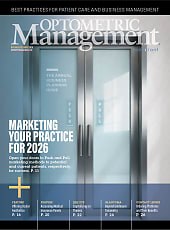
The Vision Council (TVC) has published its latest report, Provider inSights Q3–Q4 2024, offering a detailed look at the attitudes of eyecare providers regarding their practice operations, industry developments, and the broader U.S. economy during the second half of 2024.
Based on a survey conducted between Feb. 18 and March 4, the report examines how economic factors such as inflation, tariffs, staffing shortages, and emerging technologies—including telehealth and artificial intelligence—are affecting the eyecare sector.
“Our most recent survey shows that eyecare providers reported similar or slightly improved practice performance for the second half of 2024 compared to the previous two quarters, and are cautiously optimistic for 2025,” says Alysse Henkel, TVC vice president of research and insights. “Even with this optimism, providers are well aware of the uncertain economic outlook and its potential impact on their businesses—many are delaying major investments, feeling the strain of inflation, and facing persistent challenges in attracting and retaining skilled talent.”
According to the findings, 54% of eyecare providers anticipate that the U.S. economy will remain stable or improve in 2025. Despite this cautious optimism, the report highlights several ongoing challenges:
- Half of the respondents indicated that tariffs are likely to drive up costs for eyewear products, supplies, and materials. Meanwhile, 21% said tariffs are unlikely to negatively affect their businesses or may result in long-term benefits.
- Seventy percent of ECPs reported that inflation had some level of impact on their practices during the second half of 2024. Looking ahead, 35% expect inflation to have a severe or extreme impact on their businesses in 2025.
- Hiring difficulties were identified as the top challenge in the latter half of 2024, with little expected improvement this year. Six in 10 providers reported at least a moderate shortage of qualified professionals, and 36% cited a severe or extreme shortage of opticians.
- Of those reporting labor shortages, 34% suggested that expanding training and educational programs could help address workforce gaps.
The full report is available here as a complimentary download for members and for nonmembers to purchase.



